Key Points
- Renewed conflict between Armenia and Azerbaijan on Sep 19, with military operations and exchange of fire in the Nagorno-Karabakh border region. Ceasefire agreed on Sep 20, coordinated by Russia.
- Azerbaijan published new Notams saying that cross-border waypoints were closed. These Notams were cancelled on Sep 20, but most operators are still actively avoiding the region, and routing north via Georgian airspace (UGGG/Tbilisi FIR) instead.
- There have been no changes to state-issued warnings.
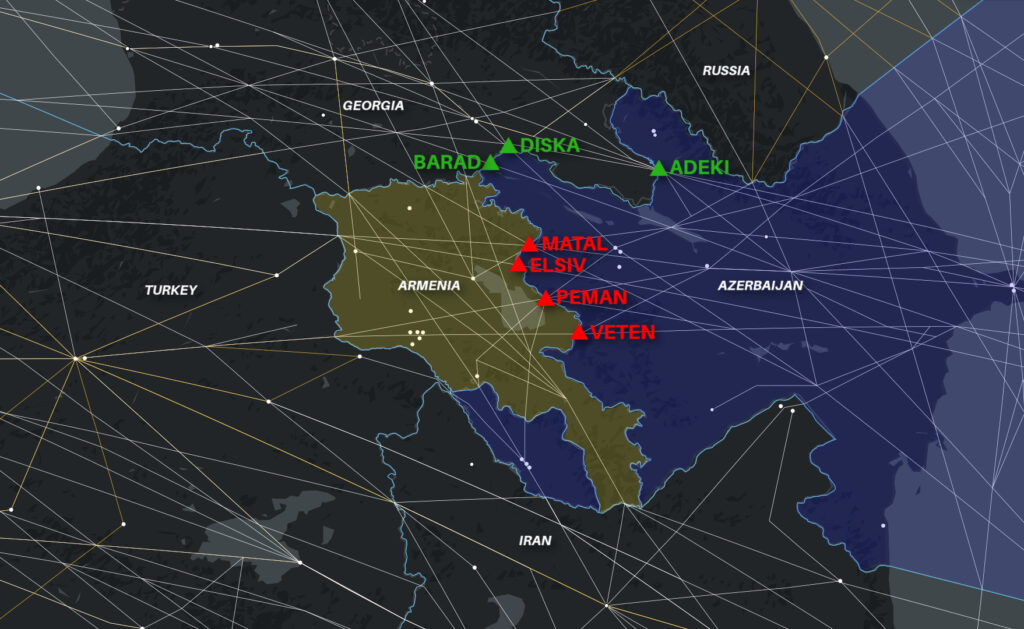
VETEN, PEMAN, ELSIV and MATAL are closed. Flights must route via ADEKI.
Update: 20 Sep 2023
Azerbaijan has cancelled its Notams which closed its airspace on the border with Armenia. But most operators are still actively avoiding the border region, and routing north via Georgian airspace (UGGG/Tbilisi FIR) instead.
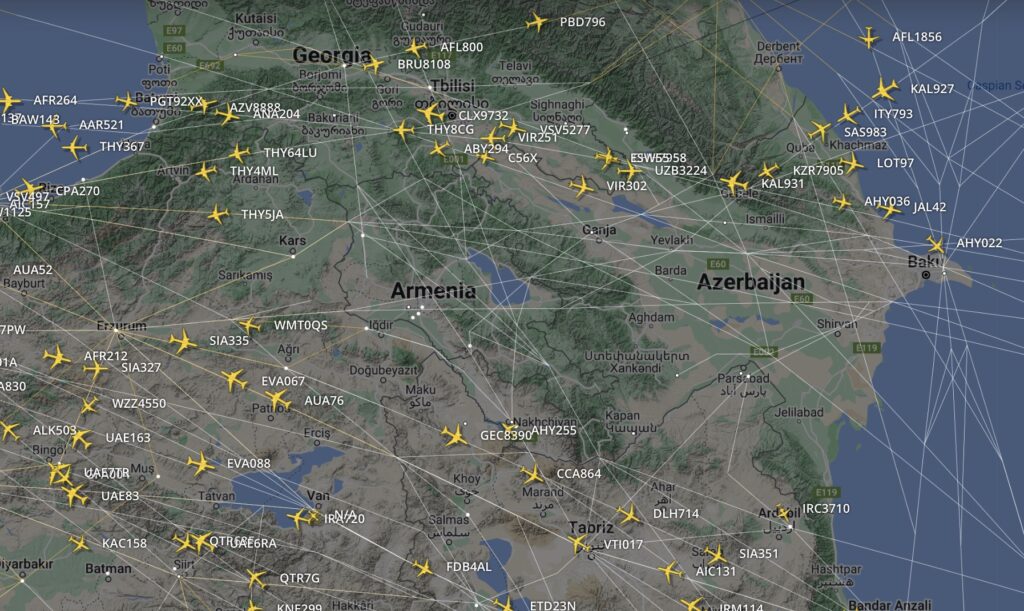
Snapshot from 1400z on Sep 20.
A ceasefire has been agreed on Sep 20, coordinated by Russia, with further talks set for Sep 21.
Several sources report that on Sep 19 Azerbaijan targeted Armenian forces using drones, artillery, and surface-to-air-missiles. This followed a statement from the Ministry of Defense of Azerbaijan accusing Armenia of shelling the positions of the Azerbaijani Army in the Nagorno-Karabakh region.
There has been no update yet to EASA’s Conflict Zone Information Bulletin.
No new foreign airspace warnings for Armenia or Azerbaijan have been issued yet either. Several of these were withdrawn at the end of the war in 2020. Following brief clashes in Sep 2022, only Canada issued a new airspace warning (for both countries) advising caution due to potential risk from anti-aviation weaponry and military ops.
But with the latest escalation in hostilities, we currently assess both Armenia and Azerbaijan on SafeAirspace.net as Risk Level 2: Danger Exists – any further large-scale ceasefire violations involving missiles or anti-aircraft weaponry present a risk to overflights in the border region.
Update: Sep 2022
- In September 2022 there were renewed border clashes between Azerbaijan and Armenia – the worst flare-up in hostilities since the war ended in 2020.
- The waypoints along the border between the two countries (VETEN, PEMAN, ELSIV, MATAL) were temporarily closed on Sep 13, but reopened the next day, after Russia brokered a ceasefire to end the fighting.
Update: Oct 2020
At the peak of the conflict in late October 2020, the airspace picture looked like this:
Here’s what happened at that time:
Azerbaijan
- Azerbaijan established a Temporary Restricted Area along the border with Armenia, which meant that all East-West airways between the two countries were effectively closed.
- They also issued a Notam advising caution across the UBBA/Baku FIR due to the spillover of the conflict, with the specific warning of the threat posed by long-range missiles which they claimed Armenia had been using to target locations throughout Azerbaijan.
Armenia
- Armenia never closed any parts of its airspace. Instead, they issued a Notam advising operators to expect tactical rerouting and short notice closures in the airspace along the border, and recommended they carry additional fuel.
Germany
- Germany issued airspace warnings for both Armenia and Azerbaijan. It did not advise that overflights be restricted to a certain altitude, but instead warned of a “potential risk to aviation… from military operation including anti aviation weaponry.”
France
- The airspace warnings issued by France were a bit different. Essentially, they said that operators should not overfly the border region except on certain airways in the far north of the UBBA/Baku FIR at FL340 or above.
More on the topic:
- More: Bizav Roadblock: Turkey and Armenia
- More: SafeAirspace: 2021 Update
- More: Midweek Briefing 22JUN: Iceland ATC strike – end in sight, Israel FPL changes
- More: Monday Briefing: North Atlantic Changes, Caspian Sea Missiles
More reading:
- Latest: Teterboro: RIP the RUUDY SIX
- Latest: 400% increase in GPS Spoofing; Workgroup established
- Latest: GPS Spoofing WorkGroup 2024
- Safe Airspace: Risk Database
- Weekly Ops Bulletin: Subscribe
- Membership plans: Why join OPSGROUP?



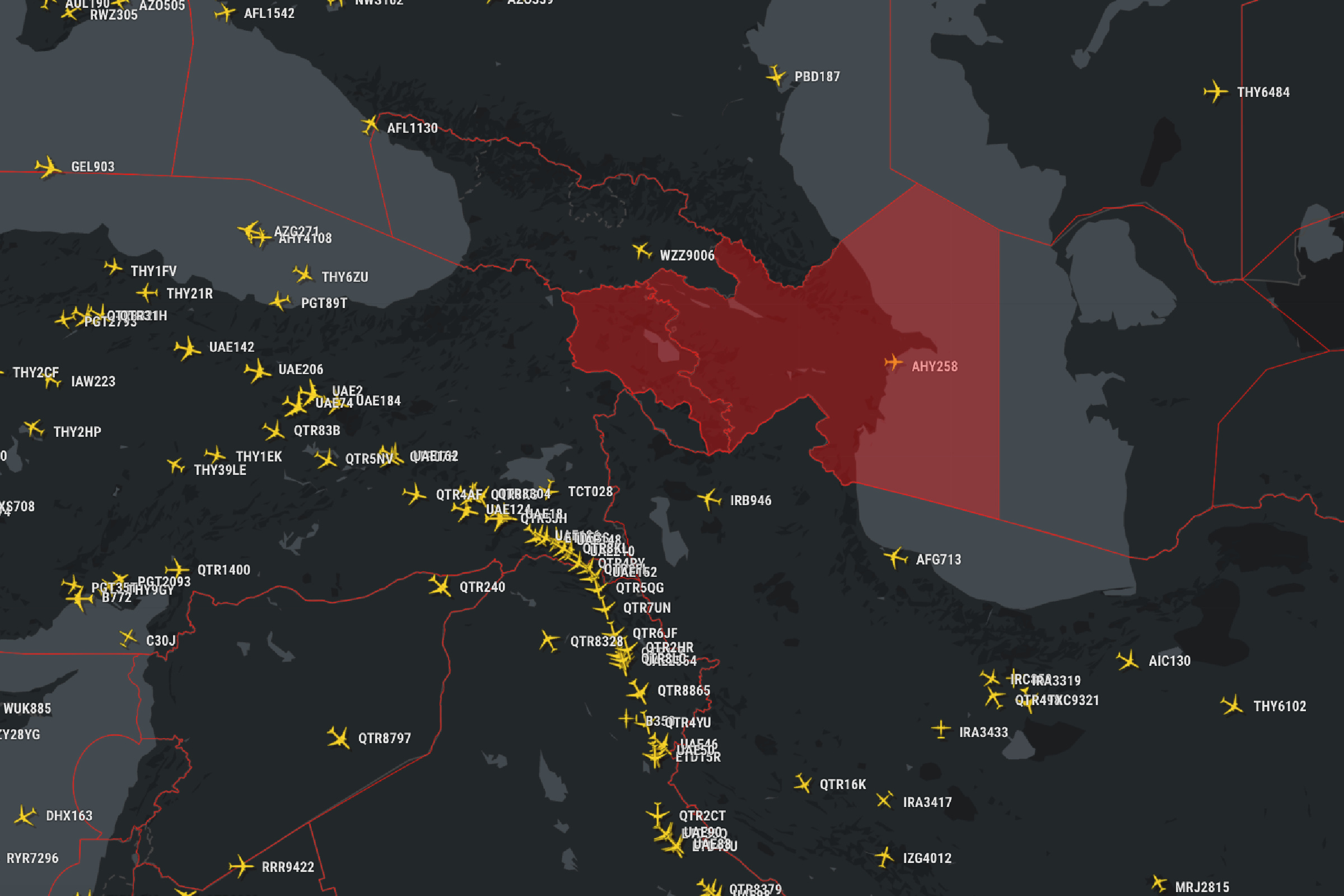
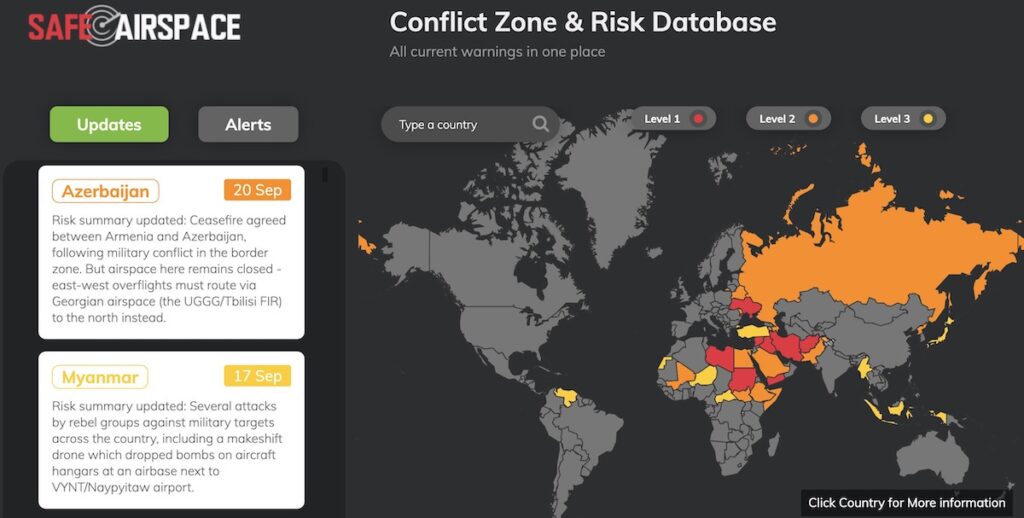
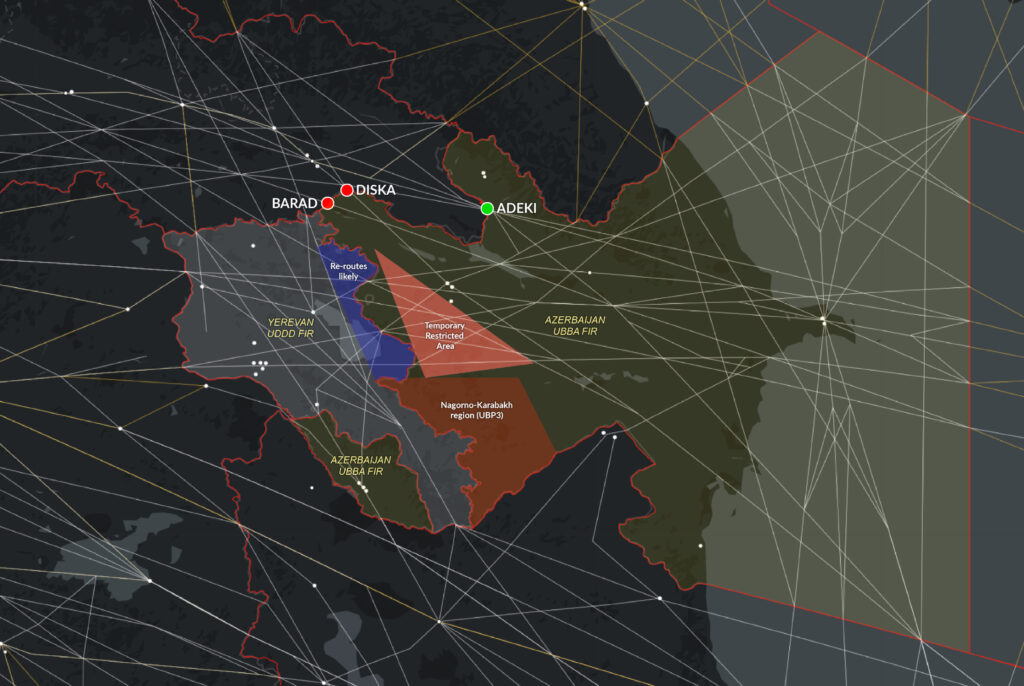







 Get the famous weekly
Get the famous weekly 





